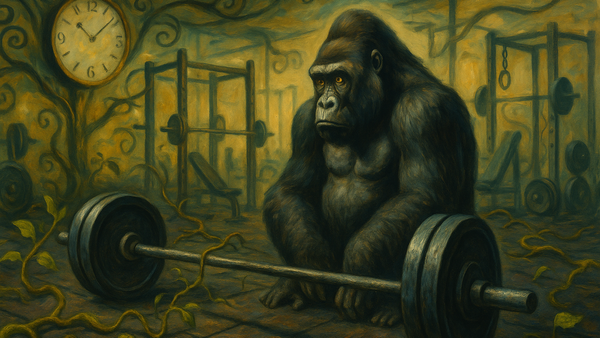Explode the Potential of Your Creativity with Co-Working
Open office spaces are often unproductive and distracting. Learn the rules of successful co-working sessions, transform them into co-creation.

I never experienced co-working as a legit environment to get work done, but rather as a new fancy word for “getting distracted but with an unlimited supply of coffee”.
A couple of days ago I was working in a local café and stumbled into a chat with a girl with Siberian-Chinese heritage, living in Paris, who models for the big French brands like Chanel. Magazines, runway shows, photo shoots. You get the picture. We vibed and she suggested setting up a co-working session. Since I love getting out of my comfort zone I decided to give it a shot.
It turned out that such sessions have the potential to explode not just my creativity but also my work efficiency and agility in terms of tactical and strategic direction. So what’s the exact concept of co-working that fosters such impactful benefits and what makes it different from classical offices and other teamworking concepts?
Co-working ideally represents an environment in which a limited amount of carefully selected people work alongside each other on their projects or tasks within a collaborative open space, providing them with the option of knowledge exchange. This creates a setting in which phases of individual focused work and spontaneous open discussions alternate. “We’re the sum of the five people we surround ourselves with”, the model had said when promoting the co-working idea to me. There’s certainly much truth in that old phrase and it hints at the main key factor for success: choosing the right people.
The Unexpected Benefits of Co-Working
There are numerous benefits you might not expect initially when thinking about getting into co-working. Here are the main ones:
- Creativity - Witnessing the way other people work and exchanging ideas with them, especially if they work on different projects, possibly even in different fields, is a strong spark for your creativity.
- Perspective - Often we limit ourselves to the perspective of our profession. If you’re a programmer you most likely tend to see the world in terms of logic, process, and code. Whereas if you’re a filmmaker, you tend to see the world in terms of entertainment, storytelling, and script. Through co-working you’ll gain immense perspective through other people’s professional viewpoints. If you’re an accountant co-working with a firefighter and a surgeon, they might benefit tremendously from your perspective on numbers while you might benefit from their view on time management and emergency checklists.
- Encouragement - People outside your field of profession tend to find the projects you work on particularly interesting. Simply because they’re new and enticing from their perspective. Therefore chances are high that they’re much more supportive and encouraging towards you and your work.
- Focus - The risk of distracting yourself from your work with your phone or social media is significantly lower, simply because you are surrounded by people who are all committed to this co-working session and who witness you in your working style and behavior.
- Efficiency - To stay productive and be efficient in your work, meaning using the least amount of inputs to achieve the highest amount of output, it is crucial to balance focused work time with your other needs. Water, food, social interactions, physical movement. Interruptions from your co-workers will provide you with the breaks you need but might not take if you were alone. Breaks are key to anchoring your focus.
Requirements to Make It Work
There are a few requirements that you should meet to successfully set up a co-working session that provides all the above-mentioned benefits. What you want is an environment that leverages your work, not one that hinders it.
- The right people - The right people are the ones who want to produce something, who have a vision to give birth to something creative, and who are already working on something specific. Wrong people are the ones who seek to be entertained and who perceive their work as a chore. So pick the enthusiasts, not the pessimists.
- The right projects - The different people need to desire to work on their individual projects. Ideally, it should be projects they have a passion for and give them a sense of purpose. While this concept also functions with people that “just need to get work done”, you might not experience the whole set of benefits described above within such a constellation.
- The right environment - Pick a place that reflects the overall vibe of work and creation. That can be restaurants, cafés, homes, gardens, parks, office spaces, basically anything that suits your taste. You could be sitting in a public park on a ping pong table with the laptops on your knees. As long as you don’t rely on Wi-Fi or electricity and bring your food. Personally, I like cafés very much that naturally attract a working crowd. Not only do you quickly get into the work zone, but you also get in touch easily with other working folks. Also, food and restrooms are right at hand.
- The right size - Keep the circle small, three to five people is ideal. If you’re just starting, pick one partner to explore the working dynamic and increase the circle later on.
- The right mindset - The participants need to consciously open up to the idea of interrupting and getting interrupted every now and then for discussion. You will ask each other for your opinion, give advice, coach, and brainstorm together. The participants should think about the value they can provide to their co-workers, not what the others can do for them. Cultivate a mindset of giving and you will receive abundantly.
- The right time frame - Set a time box for the session in which the participants commit to the practice. You can easily set up whole co-working days. If you’re just starting I’d recommend blocking three to four hours in the morning, for instance, 08:00 to 12:00 on a Saturday. If you choose a public space for your session, morning hours put you together with other like-minded people you could potentially connect with; instead of the party and leisure crowds that tend to come in the late afternoons and evenings.
Now, how do you get the people together? You simply ask and explain what you want to do. If they’re sceptic, tell them about the potential benefits and ask them to give it a try. Don’t push hard against strong resistance or skepticism though. Always remember, you want the open-minded ones with the go-for-it attitude.
How to Make It Work in Corporate Environments
If your only experience with this concept is within a corporate environment in which 75% of your colleagues more or less secretly hate their jobs, co-working tends to get reduced to interruption, distraction, and frustration.
To make this concept work in a corporate environment, you need to find the people who actually want to strive within the given system. Look beyond the people’s masks and identify the ones that are true in their desire. Don’t pick the ones that just pretend for the sake of the pay rise and what the mainstream calls a “career”, without intrinsic interest. Be aware that this type of colleague represents the vast majority of all characters you will meet in the corporate world, from newbies to C-level executives. So watch out, identify the gold nuggets.
How do you do that? Observe their attitudes and behaviors. How do they respond to overtime? How do they speak about their work after hours? Are salary, vacation, and other benefits recurrent conversation topics for them? Do they share about achievements or lament over obstacles?
Build Your Tribe
Co-working is an incredibly powerful tool to build your tribe and your community. Simply because you build strong friendships and partnerships through mutual support with purposeful productive creational work. It represents the absolute opposition to building connections through consumptive activities like going to bars or to the movies or meeting at home with wine gossiping about colleagues at work or complaining about the calamities of the day.
Does that mean you should stop going to bars or the movies? No. You should rather ask yourself who you want to be in your team. Jeffrey, who can eat three liters of buttered popcorn in one go and has watched Guardians of The Galaxy 17 times, or Vincent, who dreams of building a new calendar app that predicts events with machine learning which he currently learns coding for? Create bonds with people you would want to fight on your side. And no bond is stronger than the one of determination, purpose, and direction.
In my case, the model and I were working on very different things. She was studying runway technique and fashion brand identity and was shaping and designing her social media portfolio and strategy. Whereas I was working on the technical backend of my website, setting up servers and email boxes, and developing my branding and color palette for my writing. And although our professions were so different, the value we both drew from the exchange of knowledge and opinion was priceless. I learned about posting strategy and frequency on social media, about colors, taste, and style, and addiction patterns and coping mechanisms in relation to real needs. Insights that will all contribute to my work.
If you haven’t tried a real co-working setting, give it a shot. It might blow your mind.
Did you enjoy this article? Please consider contributing to this publication’s financial freedom.
Flows straight into content, not coffee.




